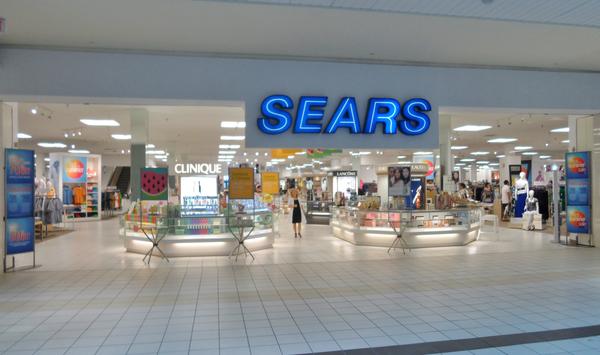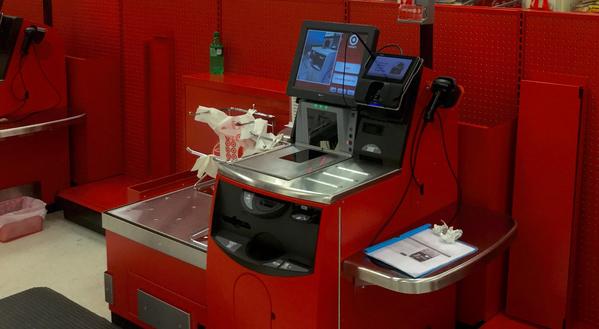 Shoplifting and employee theft make up the bulk of a $45 billion annual problem for the retail industry. Retailers continue to invest in new technology to reduce inventory shrinkage. But typical losses still hover around 2% of annual sales.
Shoplifting and employee theft make up the bulk of a $45 billion annual problem for the retail industry. Retailers continue to invest in new technology to reduce inventory shrinkage. But typical losses still hover around 2% of annual sales.
Any way you add it up, that’s a big issue for retailers, especially those with tight margins already. Electronic item tags, high-tech surveillance and facial recognition, you name it — retailers continue to search for a one-and-done, slam-dunk-way to curb inventory loss.
But the reality is that an effective loss prevention plan is your best bet to limit your retail store’s losses. It’s the only way to effectively fight problems like shoplifting and employee theft.
The Basics of a Loss Prevention Plan
A solid loss prevention plan means more than sticking a few surveillance cameras in the ceiling. Your store(s) needs a top-down, strategic focus on loss prevention if you’re going to have a real effect on shoplifting and inventory losses.
The Harvard Business Review studied the loss prevention tactics of some of the nation’s top retailers and identified nine primary aspects of an effective loss prevention strategy. Some of the highlights include:
- Commitment at the senior management level
- Loss prevention embedded at all levels
- Evidence-based tactics
- Communication about shrinkage throughout the organization
- Empowered and accountable store workers
To sum up, effective loss prevention isn’t the responsibility of one department — it takes organization-wide commitment and action. Retailers who are successful at reducing shrinkage take a top-down approach. It starts with the most senior executives and flows throughout the organization.
Creating a Plan to Reduce Shrinkage
Let’s talk about creating a plan that will actually make a difference for your loss prevention efforts. The tactics you use to reduce shrinkage may vary from one store to the next, but the steps below can help you identify what your overall loss prevention plan should look like.
Step 1: Size Up the Problem
Creating an effective, top-down loss prevention strategy takes more than just commitment. It starts with a deep understanding of the problem itself. Before you can fix it, you have to get your hands around the issue.
Measuring your starting point is the first step. What does inventory shrinkage look like in your business? How much are you losing in annual sales and how much do you stand to gain by implementing a new loss prevention plan?
Calculating retail shrinkage isn’t complicated. Shrinkage is the difference between the value of your inventory on the books and the actual inventory in front of you. That’s your retail “shrink.” For example, if your accounting says you have $100 in inventory, but you conduct a physical count and there’s $98 worth of inventory, your shrinkage is $2.
Divide shrink by total sales for the same period, and you have your inventory shrinkage percentage.
These baselines serve as a starting point to help you set concrete goals for your new strategy. Put those two formulas together and you’re in good shape to proceed to Step 2.
Step 2: Secure Buy-In
Effective loss prevention starts at the top and flows down and out throughout the organization. Fighting shrinkage means securing buy-in from everyone in the business – from the owner down to rank-and-file store workers.
But, how do retailers accomplish this?
The most important tactic for getting your team invested in loss prevention is simple: be transparent about the problem. Communicate shrinkage numbers across the organization. Help your team conceptualize how much you have to gain by addressing shrinkage. Share loss prevention goals and connect them with the progress you make.
For most senior level managers, the benefit of loss prevention comes down to the numbers. What about store workers who may not be as invested in the organization’s performance? You need buy-in from them, too.
To get it, empower store employees to take responsibility for the store’s success. Set clear benchmarks and reward employees who reach and surpass their goals. Share team success with every member of the organization.
Step 3: Audit Hiring and Training Practices
 Retail shrinkage happens for many reasons, but the four most common causes are:
Retail shrinkage happens for many reasons, but the four most common causes are:
- Shoplifting,
- Employee theft,
- Paperwork errors, and
- Supplier fraud.
By taking loss prevention into account during the hiring and training processes, you can make an impact on the two largest of those factors — shoplifting and employee theft.
When it comes to employee theft, you might imagine store workers pocketing merchandise for themselves. But employee theft also includes things like refund abuse and overuse of discounting. That type of abuse makes up around 34.5% of retail shrinkage.
When you hire store workers, what qualities and skills are you looking for? You should be screening for conscientious candidates who conduct themselves with integrity. Employees who excel in those areas are partners in the loss prevention fight. They’re less likely to abuse their power as employees and more invested in a retailer’s success. They’re more dedicated to helping you reduce retail shrinkage.
Good employees want to prevent inventory losses, but it’s your job to give them the tools and training they need to make it happen. Employee training to identify and stop shoplifting can make a big difference, reducing your shrinkage rate by as much as 70%.
FURTHER READING:Your employees are your frontline defense against shoplifting. Learn more about how to hire and retain great employees.
When it comes to loss prevention training, you have plenty of options. You can try an online course like the Loss Prevention Academy or the Loss Prevention Foundation’s certificate program. .
Or you can bring in a third-party loss prevention and security expert to train employees in person.
Optional: Hire a Loss Prevention Manager
Hiring and training with the goal to reduce retail shrinkage in mind gives you a headstart in the fight against losses. For many stores, it’s easy to push crafting and enacting a loss prevention strategy off of one person’s plate… and onto no one’s. That’s why hiring someone whose primary role is to spearhead loss prevention efforts is an option worth considering, particularly as your business grows.
You also can bring in a specialized retail security officer to serve that purpose rather than relying on your own employees to confront potential shoplifters themselves.
Tactics to Prevent Shoplifting and Theft
Now that you know how to create a loss prevention plan, what tactics should you consider for reducing theft and shoplifting? Every store, no matter how big or small, faces the threat of theft.
Larger retailers often have trained loss prevention personnel. Their entire job is to prevent shoplifting. If that isn’t a realistic option for your store right now, there are several changes you can put in place to make life harder for shoplifters.
- Deliberate store organization: Aisles overflowing with disorganized merchandise are like a playground for shoplifters. They make it easy to grab any number of items without leaving a trace. After all, how can employees tell something’s missing when products don’t have a designated place where they should be? Keep your store well organized, and have employees restock and tidy up shelves regularly throughout the day.
- Top-notch customer service: It’s good business sense to focus on great customer service – but it can also help deter would-be shoplifters. Regular customer service best practices (like greeting customers as they enter the store and adequately staffing the floor) serve a dual purpose. They let well-meaning customers know they’re welcome and can find help when needed, and they assure less well-meaning visitors that they’re seen.
- Conspicuous surveillance and signage: Speaking of letting customers know they’re seen, it’s always good practice to have surveillance throughout your store. Conspicuous surveillance cameras, uniformed security, and signage making visitors aware of both are a powerful deterrent against shoplifting.
Successful Loss Prevention Plans
Now that we’ve covered all the basics, let’s look at some successful loss prevention plans out there in the wild. Whether your budget is $100,000 or $0, every store can learn from these case studies.
Sears Canada: Video Analysis Enables Proactive Prevention
 Although Sears Canada finished shutting all their doors in early 2018, we can still learn from their example on the loss prevention front.
Although Sears Canada finished shutting all their doors in early 2018, we can still learn from their example on the loss prevention front.
At Sears Canada, they focused on combining old standbys and cutting-edge technology. They armed loss prevention personnel with the best tools, not just the newest. They relied on video surveillance in all Sears Canada stores – but not to catch shoplifters after the fact.
The loss prevention team used data and video analysis of in-store surveillance cameras to identify patterns, like areas of the store where customers spend a lot of time. By analyzing these patterns and sharing them across all stores, the team was better able to train their focus on “hot spots,” or areas prone to theft activity, and catch shoplifting behaviors before they became a problem.
Target: Loss Prevention at Self-Checkout
 One of the bigger retail developments of the last decade is the appearance of self-checkout lines at major retailers. Eliminating the cashier (scanning each item, interacting with customers, observing behavior) presents an obvious barrier to loss prevention efforts.
One of the bigger retail developments of the last decade is the appearance of self-checkout lines at major retailers. Eliminating the cashier (scanning each item, interacting with customers, observing behavior) presents an obvious barrier to loss prevention efforts.
Target approached this problem by leaning hard into one of the anti-shoplifting tactics above: conspicuous surveillance. If you’ve gone through self-checkout at a Target store recently, you might’ve noticed — right at eye level — your own face staring back at you. “You’re being monitored,” it reminds you. They also train surveillance on the scanner, so loss prevention personnel can see which items the customer scanned and which they didn’t.
Meijer: Using Technology to Find Exceptions
When it comes to surveillance, it can be cumbersome and time-consuming to find proof (or lack thereof) of both employee theft and ordinary shoplifting. Loss prevention personnel may have to watch an employee’s entire shift only to find no evidence of theft — not exactly an efficient process.
Meijer’s loss prevention team took a different approach. They use intelligent point-of-sale (POS) monitoring to collect mounds of data. Then they let the software analyze it all to identify events that don’t fall into the normal pattern of transactions. That means they spend more time mitigating losses and eliminating the causes of retail shrink that fall within their control.
Get More Out of Your Inventory With a Loss Prevention Plan
Retail shrinkage is a huge, industry-wide problem. Retailers both large and small grapple with finding new and efficient ways to prevent shrinkage, particularly that from shoplifting and employee theft.
Despite (or perhaps, because of) the stubborn nature of inventory shrinkage, it’s a problem worth investing in. Implementing a top-down loss prevention strategy can help your business restore the 2% of annual sales lost to inventory shrinkage — boosting efficiency and revenue across the board.

